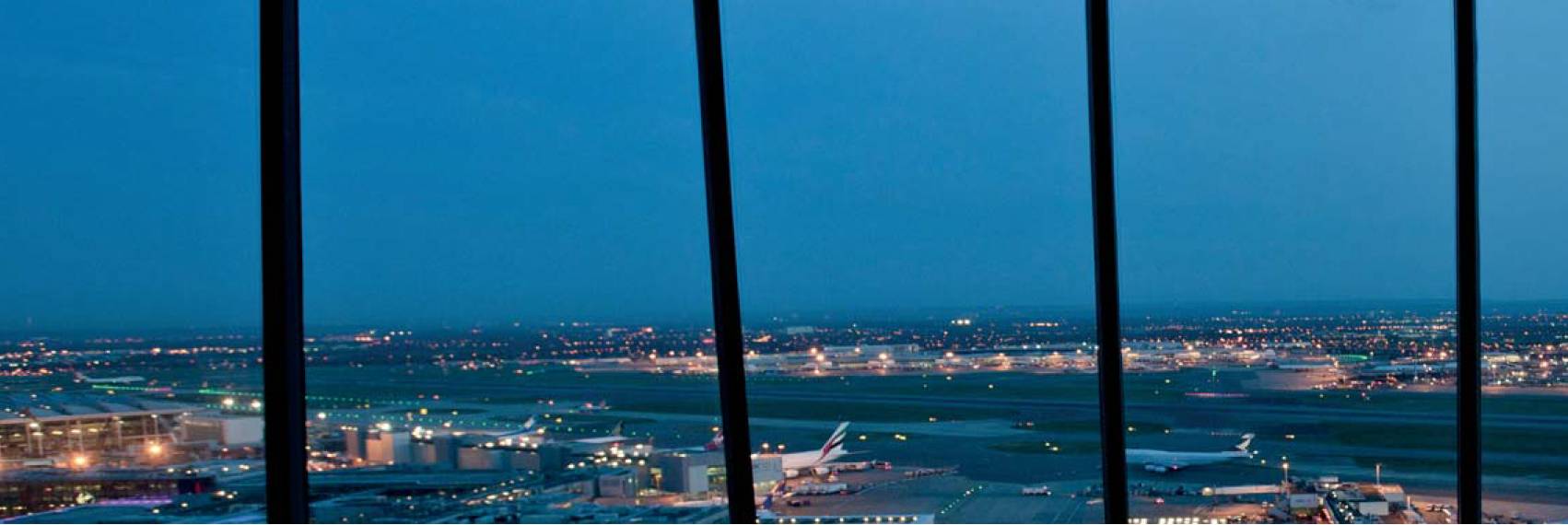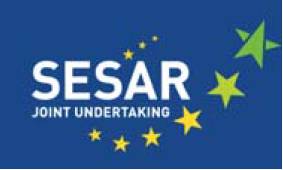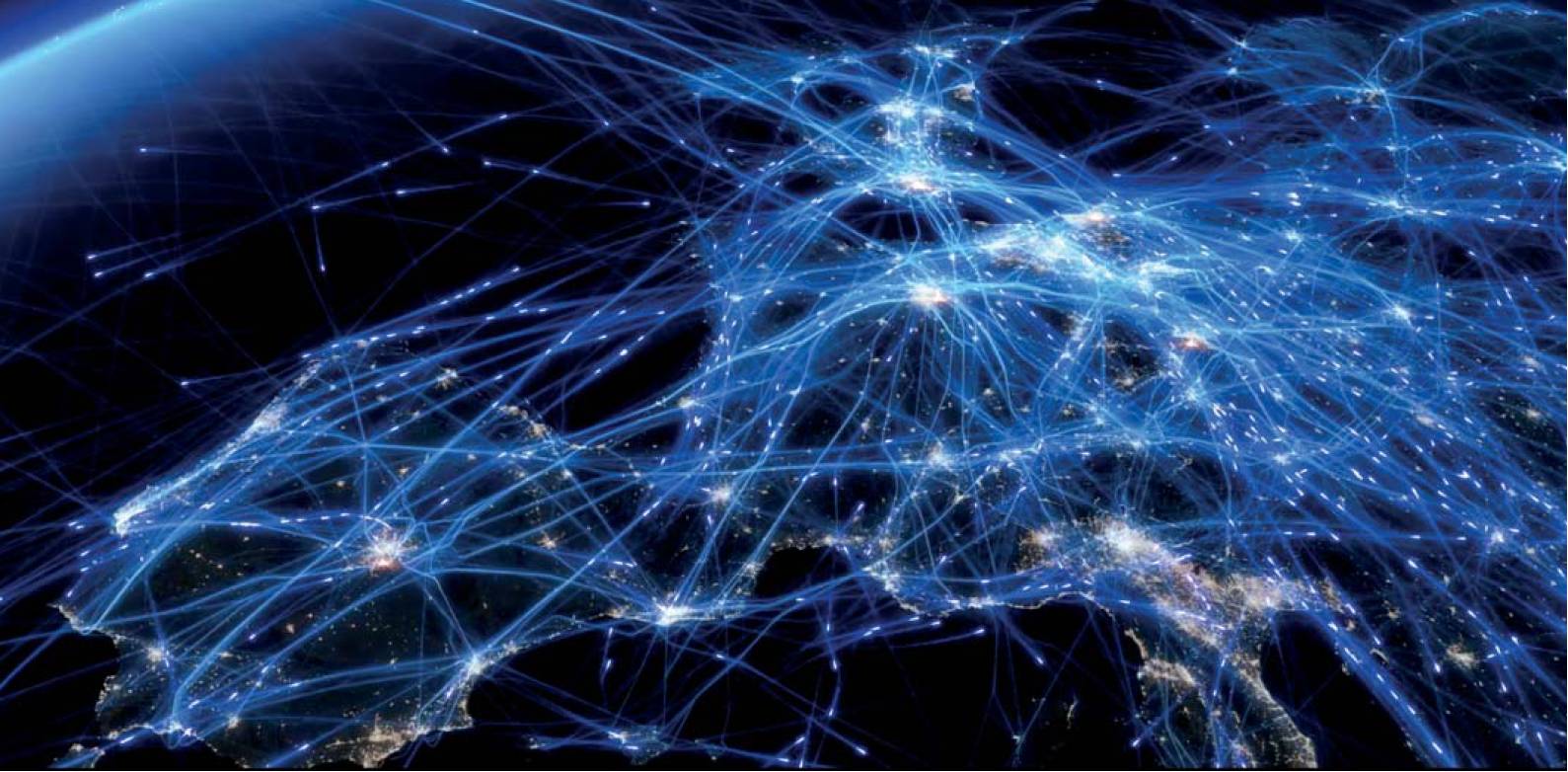AEROSPACE Single European Sky
Stuck in a holding pattern?
ALAN DRON provides a post-Brexit and post-Covid update on the Single European Sky ATM project. Can if finally deliver?
 NATS
NATS
In theory, it should be a no-brainer: make airliners’ routes more direct, save time, money and fuel and, increasingly importantly, CO2 reduces emissions. For the past 23 years, Single European Sky (SES) has had that aim. However, its progress could politely be described as glacial and some of the early gains have even been lost.
So, what future for the project?
At its launch in 1999, SES was aimed at improving the performance of air traffic management (ATM) and air navigation services (ANS) through better integration of European airspace. In its early years, the stated benefits were said to be potentially huge: ‘Compared with 2004, the SES (upon completion around 2030-2035) could triple airspace capacity, halve the costs of ATM, improve safety tenfold and reduce the environmental impact of aviation by 10%,’ according to the European Parliament.
 SES was launched in response to delays to flights as a result of air navigation problems which had reached a peak in Europe in the late 1990s. The initiative was intended to reduce the fragmentation of European airspace, thereby increasing its capacity and the efficiency of air traffic management and air navigation services.
SES was launched in response to delays to flights as a result of air navigation problems which had reached a peak in Europe in the late 1990s. The initiative was intended to reduce the fragmentation of European airspace, thereby increasing its capacity and the efficiency of air traffic management and air navigation services.
In practice, SES should result in reduced flight times (because of shorter paths and fewer delays) and, consequently, in lower flight costs and aircraft emissions.
The first set of common requirements establishing the SES was adopted in 2004 (SES I). These laid down the framework for the creation of SES, on the provision of air navigation services, on the organisation and use of the airspace in SES and the interoperability of the European Air Traffic Management network.
This framework was amended in 2009 (SES II) to include performance-based mechanisms. It was also complemented by the extension of European Union rules on aviation safety to ATM, ANS and airport operations. A subsequent proposal, SES II-Plus, became snarled up in a dispute between the UK and Spain over Gibraltarian airspace and was only relaunched after the UK left the EU.
The political aspect
The technical aspects of SES have been inevitably intertwined with political considerations, notably concerning national sovereignty considerations and concerns among trade unions representing air traffic controllers that the streamlined air traffic management system would result in job losses.
 NATS
NATS
The sensitivities surrounding SES are such that several officials interviewed by AEROSPACE declined to be identified and would only provide information on a background briefing basis.
“It’s both very political and very technical,” said a source at the Civil Air Navigation Services Organisation (CANSO), which speaks for the global air traffic management industry.
He accepted that controllers’ unions had fears over job losses, “That’s why we want to do this as a process with them, rather than trying to impose it.”
Among initiatives to make control of traffic more efficient is ‘free route airspace’, a concept whereby a controller gives a pilot more freedom to plot their own routes, thus enabling more efficient flights.
That has been rolled out, but operates currently within an individual country’s airspace. The hope is to develop it to allow that freedom to be expanded between countries.
“The really controversial issue is sovereignty,” he noted – probably inevitable when the EU attempts to create new supranational structures. “From what I’ve heard, this was to be the first step towards a single European ATC system.”
A FAB system
“Functional Airspace Blocks (FABs), covering small groups of countries, were introduced as part of 2009’s SES 2 initiative as a first step towards this,” said the official.
The hope was that, initially, the 27 different ANSPs would be slimmed down to around nine. However, “the reality was that certain states didn’t want to share sovereignty.”
A few FABs were created – notably, one covering the UK and Ireland – but these have effectively lapsed, although the members of the few former FABs continue to co-operate closely, notably in Western Europe.
“They exchange best practices and all sorts of technical collaboration.” The longstanding Maastricht Upper Airspace Control (MUAC), for example, “effectively does what the EU has been urging”.
MUAC is an international non-profit air navigation service provider (ANSP), operated by Eurocontrol on behalf of four States – Belgium, Germany, Luxembourg and the Netherlands – that provides multinational civil and military air navigation services in the upper airspace (from 24,500ft to 66,000ft). MUAC is part of the Functional Airspace Block Europe Central.
There are other small areas of international co-operation. Finland, for example, can delegate services in its airspace to other ANSPs. However, such initiatives are very much at the margins.
However, Eurocontrol proposes that it should have executive control over flight planning “and that’s where it runs into difficulty”, said the CANSO source. “ANSPs would lose a certain amount of their responsibility and for our members, that causes problems.
If that power moves to another body, what does that mean for liability? Also, within the SES II-Plus initiative, there’s a proposal to set up a European economic regulator [covering the air traffic management sector] and that’s not supported by member states. Fundamentally, this is something member states don’t like because it touches on sovereignty.”
Trilogue discussions
At present, the European Commission, the European Parliament (which is largely supportive of the plan) and the European Council, which represents the individual states, are engaged in difficult trilogue negotiations over the proposal to come up with a compromise acceptable to all parties: “You can see they’re going nowhere and I wouldn’t bet on them going anywhere soon. Member states and the European Parliament are pretty far apart on fundamental positions.”
THE TECHNICAL ASPECTS OF SES HAVE BEEN INEVITABLY INTERTWINED WITH POLITICAL CONSIDERATIONS, NOTABLY CONCERNING NATIONAL SOVEREIGNTY CONSIDERATIONS AND CONCERNS AMONG TRADE UNIONS
“There’s a recognition that SES could deliver more. There are things that could be done through investment and digitisation.” One facet that may free up more capacity is the flexible use of airspace – that is, making space available in the sky for airliners that is used periodically by military users.
Another is proposals to have non-geographic ATCOs licensing. “When an ATCO is trained, they’re trained to deal with a specific geography. Nongeographic ATCO licensing would, in theory, allow an ATCO to use their licence to control another area [other than] where they are based. This is a long-term ambition. There are a lot of questions about how it would be applied. It needs buy-in of staff organisations. We’re having very early discussions about how this could be applied when it’s very political.” SESAR is also well-developed, complete with new technologies and collaborative decisionmaking has also been deployed. “There’s all sorts of things going on.”
One of the ANSPs involved with SES from the outset was the UK’s NATS. Brexit means that the UK is now absent from the project’s political framework, but it is still aligned with its operational and technical aspects. The international nature of NATS’ work means that it retains interoperability with its air traffic neighbours, an arrangement that is mutually beneficial.
The UK-Ireland FAB, for example, established around 2008, has changed in complexion due to the changed political backdrop but, operationally the two nations still undertake many of the same activities in both the domestic and Oceanic areas. In fact, collaboration between the two nations in air traffic management had always been good, anyway, and the imposition of the legal FAB structure was probably unnecessary.
FABs, in general, have faded from the spotlight somewhat after the EC concluded that they had not been as successful as hoped, partly because they realised that bringing individual states together meant the FABs had become political entities.
The principle of improving airspace efficiency
There have been suggestions from some quarters that one of the reasons behind SES’ failure to thrive has been that it has never garnered much support from individual nations’ governments, which has led to a lack of impetus from national capitals. NATS believes that while nations have supported the general idea of more efficient use of airspace, there have been differing views on the success – or otherwise – of the initiative and on whether changes proposed at policy level have been what is required to further improve the ATM situation. Many governments are generally satisfied with the safety and efficiency aspects of the existing system and taken the view that, as a whole, it seems to work well.
Immediately pre-pandemic, of course, there were some capacity problems as airliner movements continued to grow, but some of these had very specific, national reasons, such as strikes among French air traffic controllers.
SES, AS A POLICY, IS SOMETHING THAT’S NEEDED, BUT ONCE YOU’VE SAID THAT, WHAT ARE THE OBJECTIVES?
Gauthier Sturtzer
Chairman of the ATM Committee of the European Transport Workers Federation
States support the principle of improving airspace efficiency but have reservations over the measures the European Commission is proposing to make this happen.
Gauthier Sturtzer, Chairman of the ATM Committee of the European Transport Workers Federation says: “SES, as a policy, is something that’s needed, but once you’ve said that, what are the objectives?” For the past 15 years or so, he said, it had been clear that the main aim had been to lower the costs of the ANSP system.
The FAB initiative was about incentivising providers to merge with their neighbours, which is something which, in the end, did not happen anywhere in Europe. It’s about making the right choices in policymaking and our feeling towards the latest initiative, SES II-Plus, is that the objectives are not suitable for the needs of the air traffic management system.”
“Putting more downward pressures on costs was good from an airline perspective”, he said. It had been translated into European Commission policymaking that was not suitable for either the air traffic management industry or, ultimately, for its workers.
“What we’ve requested from the European Commission several times is to come up with a social agenda or, at least, a social analysis of the policies they are establishing, so they have a full picture of the effects indicated by the policies they are proposing. This is something we are working on with the European Union Aviation Safety Agency (EASA) and we are trying to establish objective criteria to assess the social impact of the regulatory proposals. That process is still continuing.”
Clearing skies to come?
Like CANSO, the union took the view that the trilogue negotiations between the Commission, Parliament and Council “hasn’t been very successful so far, as the positions of the Commission and Parliament on one side and the Council on the other, are very far apart, because the states also see the effects on sovereignty of their airspace that some of the initiative may have. We have to wait and see what will come out of this. We’re not optimistic about reaching a compromise any time soon. That would probably trigger the Commission to put a hold on the whole SES II-Plus initiative and think about steps in the coming years.”
As the union was not party to the behind-closeddoors trilogue discussions, it could not be certain of this outcome but “that’s how we see the next months. We think the proposal will be dropped and bits [of it] will come back in different policy initiatives.”
 NATS
NATS
Sturtzer added that the Commission had “dressed in green” its latest 2020 proposals, saying that improved flight efficiencies would bring environmental benefits.
So, what is the way forward for improving airspace efficiency in Europe? NATS says that the message it is receiving from customers and airspace users is that they want to see continued alignment among ANSPs and so it is working to further improve its systems across its operation and much of this is being done in co-operation with European partners.
Some of these deploy Single European Sky ATM Research (SESAR) concepts which include good cross-border co-operation.
For NATS, Brexit has made it important that its good operational relations with other ANSPs continue and this has been the case. It is still, for example, very connected to Eurocontrol’s Network Manager, who has overall control of the EU’s ATC system and with organisations, such as CANSO. It is this collaboration that is important to the flying public.
In this sphere at least, it seems, EU desires have been dashed by old-fashioned concerns about national sovereignty. Whether those concerns can be overcome remains to be seen.
 NATS
NATS SES was launched in response to delays to flights as a result of air navigation problems which had reached a peak in Europe in the late 1990s. The initiative was intended to reduce the fragmentation of European airspace, thereby increasing its capacity and the efficiency of air traffic management and air navigation services.
SES was launched in response to delays to flights as a result of air navigation problems which had reached a peak in Europe in the late 1990s. The initiative was intended to reduce the fragmentation of European airspace, thereby increasing its capacity and the efficiency of air traffic management and air navigation services. NATS
NATS